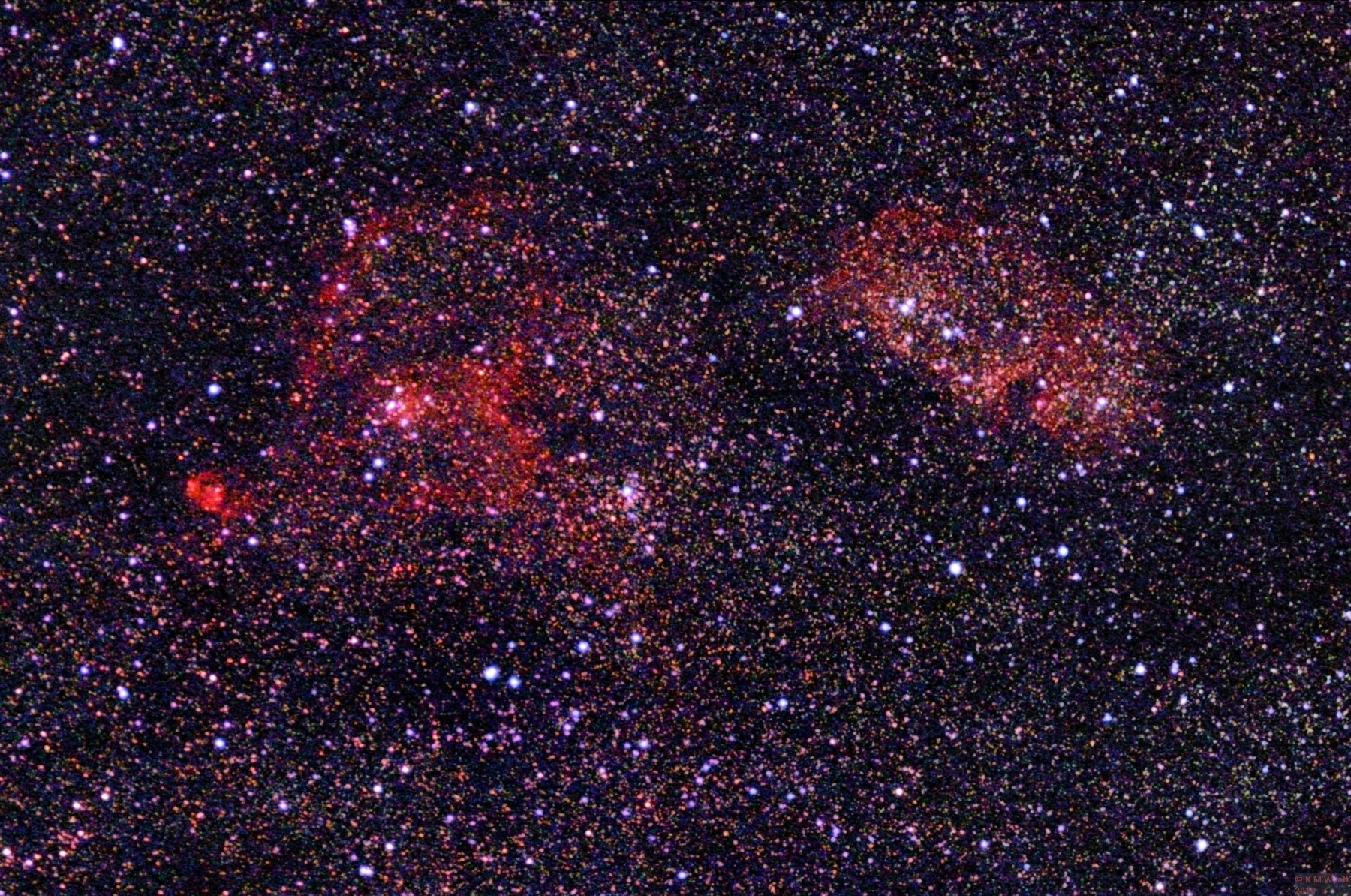Originally, a 'nebula' was a word used to describe any misty thing in the night sky that couldn't be resolved into a more easily defined object such as a star, planet or comet. This meant that star clusters and galaxies later found to be made of smaller objects were included. What we call nebulae today are generally clouds of gas.
Some of these are irregularly shaped and other have a generally round appearance - called planetary nebulae as they were originally thought to be made of tiny proto-planets orbiting a star. To photograph such objects you will need a telescope or camera mount that can be polar aligned and track the night sky.
Planetary Nebulae
A planetary nebula is formed when an ageing star suddenly convulses and shrugs off a ball of hot gas. The Ring Nebula such an expanding shell of gas. Looking through a telescope it has the appearance of a delicate little smoke ring, but a 30-60 second exposure brings out rich colour. The blue areas are mostly oxygen III while the red outer shell is composed of hydrogen ions. It is also known as M57 as it is one of a list of objects that 'could be confused with comets' on a list compiled by the 18th century French astronomer, Charles Messier.
The Ring Nebula M57, note both red and blue components
Most such 'planetary nebulas' do not appear as round as M57 (although the elusive bubble nebula is even more perfect!). The 'Dumbell Nebula', M27, has two lobes and in this shot you can make out the sphere of glowing red gas around the blue clouds. I think it looks like a BMW logo!
The Dumbell Nebula, M27 - its outer hydrogen envelope is very faint, an astro-modified DSLR was used to help image it
Other Nebulae
The sky is full of other nebulae, from swirling skeins of gas to great clouds. Some of these are hot 'emission' nebulae, glowing by their own light. Reflection nebulae are lit by nearby stars. Dark nebulae appear as black patches masking the stars beyond. They are particularly dense along the plane of the Milky Way. The Great Rift in the constellation Cygnus is an example of a dark nebula.
Pelican Nebula
The Pelican Nebula (Right) is an emission nebula near the star Deneb in the Constellation Cygnus. It is near the larger North America Nebula (left) but is less bright and is best photographed using a DSLR that has been modified to be more sensitive to red light by removing it's IR filter. The photo below was done this way, also with a cheap (£10) light pollution filter, The modification of my previous camera was made following a step-by-step guide. Be aware that such a modification will void any guarantee on a new camera and may ruin an old one. This image is a stack of about 75 60-second subs.
The Pelican Nebula and on the left is the 'Gulf of Mexico' region of the North America Nebula
The Heart and Soul Nebulae
This pair of emission nebulae lie in a rich part of the Milky Way, near the constellation of Cassiopeia. Through a telescope you are most likely to see just the two small star clusters at the centre of each nebula. As with the pelican nebula they are more visible when photographed using a camera that can detect near infra-red light.






